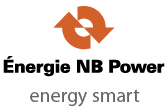Learn About Electricity
The word electricity came from the Greek word elektron, meaning amber. Several centuries ago it was noticed that when you rubbed an amber stone things "stuck" to it. This was the beginning of the discovery of electricity in its simplest form, static electricity.
Electricity is electrons in motion. Every atom has three basic parts: electrons, protons and neutrons. An electron carries a tiny negative charge. Electricity occurs in nature in the form of lightning, electric eels and the small shock you sometimes feel when you touch a doorknob, particularly in the winter.
To get electrons moving, so we can turn on lights and run factories, we build power plants where magnets are spun inside coils of wire. The spinning magnets put electrons in motion inside the wires, creating electricity. This is called a generator. No matter what method is used to turn the magnets, the electricity produced by the generator is the same.
There are two major categories of energy resources:
- Renewable: This means the resource can be used over and over again (wind, solar, and water)
- Non-renewable: This means the resource can be used only once (oil and coal)
At NB Power, we use both of these energy resources to supply the entire province of New Brunswick with the electricity they need every day.
Check out this video we made with our education partner, The Gaia Project, for an introduction to electricity generation in New Brunswick









